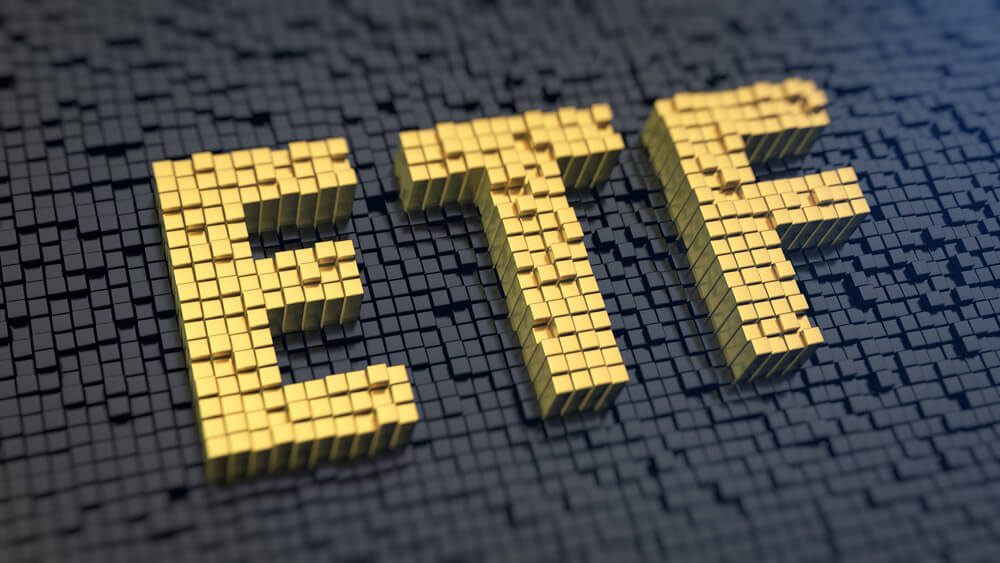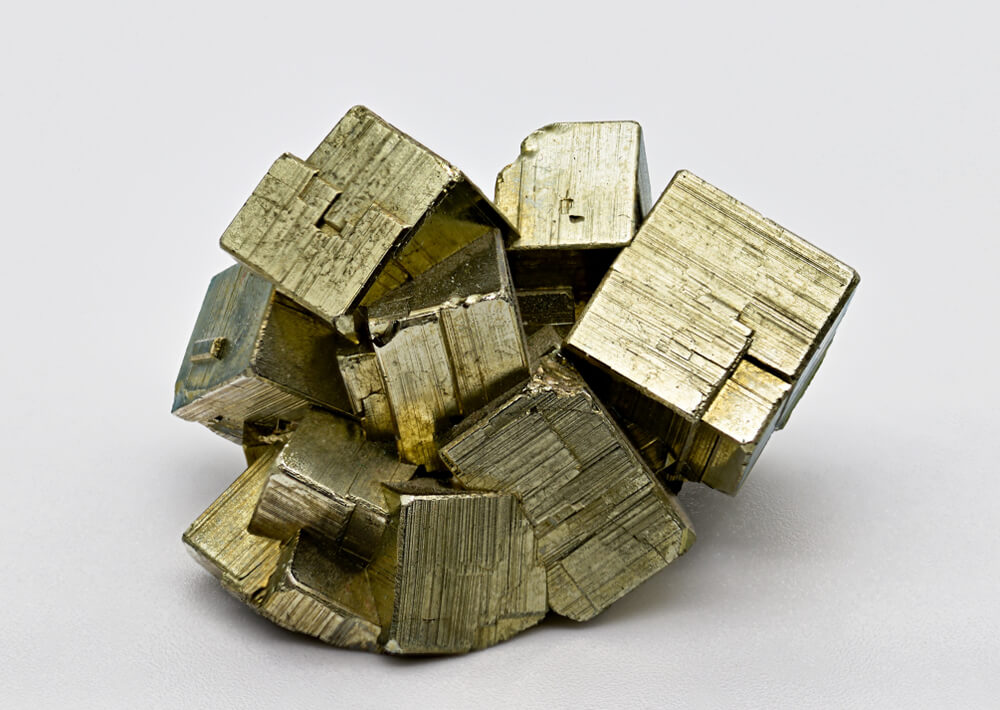
How Does a Gold ETF Work
Gold is a great asset to add to an investment portfolio. It may not be the primary driver of a fund’s growth, but it will certainly help steady the ship when the stock market is down or when there’s market volatility in general.
You could procure gold as bullion, stocks, futures, ETFs (exchange traded funds), etc. Physical gold or gold bullion is the most common way to invest in gold because it affords actual ownership of gold. Many investors like to see and touch the gold they own.

Another gold investing route is paper gold. People who are well-versed with stock markets or stock trading, in general, find gold-based shares a solid fit. That is particularly true if they are not too keen on owning physical gold and don’t want to put up with the storage and security concerns gold bullion usually presents.
Gold ETFs represent another gold investing category, which is a cross between physical gold and stocks. In other words, a gold ETF lets you invest in physical gold while not putting up with the various hassles associated with the ownership.
To help you learn more about gold ETFs, we’ve covered the following:
- A brief overview of gold ETFs and their positives and negatives
- The best gold ETFs to invest in
- Answers to a few key questions you may have
If you didn’t venture near gold ETFs because you didn’t know how they worked, read on to find out what you were missing out on.
Table of Contents
What is a Gold ETF? How Does It Work?
An ETF (exchange traded fund) is a kind of security tracking an index, commodity, sector, investment strategies, etc. It is exchange-traded, which means it could be bought or sold just like regular stocks. A gold ETF is a form of commodity ETF — with gold being the commodity.
Gold ETFs provide investors exposure to gold movements’ prices without having bought the metal. Since the ETF holds the precious metal, its price moves with gold prices. Besides physical gold, gold ETFs could hold gold as stocks, bonds, futures, or an assortment of them.
A gold ETF is usually set up as a trust — under which the ETF keeps a specific quantity of gold (as gold bars, coins, etc.) for each ETF share issued. Buying an ETF share means owning a part of the gold asset the trust holds. Kindly note that you cannot convert or seek the underlying gold in exchange for your ETF shares because you do not own the gold in parts or otherwise.
People who invest in gold ETF know they will not have any real gold in their account. They couldn’t care less. A gold ETF attracts them because it gives them exposure to gold’s price movements or performance without owning the metal. Like any gold asset, a gold ETF would serve as a hedge against political and economic disruptions and currency devaluation.
Investors who’d like to invest in the gold mining sector could also gain exposure to the industry via a gold ETF.
Read more: Gold vs ETF investments
Gold Price Tracking Error
Generally, gold ETF prices coordinate with the price of gold accurately. But there could be rare instances of mismatch or minor tracking mistakes. These are referred to as “tracking errors”. The error is essentially the difference between the ETF’s price and the underlying gold’s spot price.
When a gold ETF’s price diverges from its underlying asset, arbitrageurs step in. Arbitrageurs are investors who look to benefit from price discrepancies or market inefficiencies. They exploit the price inadequacies by carrying out simultaneous trades, offsetting both to secure risk-free profits. By exploiting the price inefficiencies, they inadvertently help maintain accurate gold prices.
The price oversight is primarily caused by expenses of the fund — administration costs, transaction costs, etc. Since funds that track a benchmark tend to make operational mistakes, tracking errors are difficult to avoid.
Real Gold and Fool’s Gold: The Major Differences
There are just so many discrepancies between gold and pyrite. People who confuse the latter for gold are justifiably called “fools”.
Hue and Shine
For starters, pyrite is a mineral, like a diamond, and not a metal, let alone a precious metal. It’s got a sheen and shine, more akin to a diamond than gold. It’s, however, not “crystalline”.
Under light exposure, pyrite glitters. Based on the color of the light and its intensity, it could exhibit different tones. When there’s no light, fool’s gold has no shine whatsoever. Gold may not dazzle in a dimly lit room, but it would have a minor yet noticeable shine and luster.
Durability
Gold is malleable or can give in to a bit of a force. Pyrite is a bit more rigid than gold and doesn’t warp. On the Mohs hardness scale, gold is 2.5, which is lower hardness than pyrite’s significantly higher 6 to 6.5 range.
Unlike gold, the mineral pyrite shatters instead of bending under duress or slight pressure. It won’t flatten like gold. Therefore, you need to be extra-cautious when trying to cut the material as it could shatter and crumble if dealt with roughly and not scratch like any other hard object.
When impaled with a thin, sharp object, pyrite would crumble or show signs of disintegration at the particular spot. Gold will develop a dent instead. It is imperative pyrite is not subjected to physical tests by inexperienced people or inexperienced prospectors but by individuals who know a thing or two about carving or dealing with mineral stones.
When subjected to a streak test or upon rubbing gold against a surface harder than gold, such as white porcelain, gold will leave behind its small traces on the other material. Pyrite will also do that, but the remnant is likely to be a greenish-black streak. Pyrite is highly unlikely to leave behind a yellow spot.
Form and Texture
As mentioned earlier, pyrite is usually squarish or has relatively sharp edges. It doesn’t have the rounded edges and smooth texture of gold. In other words, pyrites are sharper and angular than gold in their natural states. Also, fool’s gold smells like sulfur. Gold, on the other hand, smells like nothing.
Gold ETFs: Benefits and Drawbacks

ETFs, in general, have multiple benefits and a few negatives. A gold ETF encompasses them all and has some unique things to offer and niggles as well.
Simple and Highly Liquid
Even if gold ETFs are tied to physical gold, they are pretty liquid. They trade through market hours and do so quite frequently. The liquidity the fund affords helps investors buy or sell gold ETF shares as often as they wish. In other words, gold ETFs do not sacrifice liquidity in place of increased diversification.
Lesser Fees
Since gold ETFs could be invested in an array of gold assets, you can invest in all of them through a single transaction. You need not put money in them all separately, thereby negating multiple commission fees associated with each trade. Moreover, gold ETF management fees are lower than gold mutual funds since the managers do not have to pay anything for gold storage and security.
No Real Gold Ownership
If you’re looking to own the gold you invest in, consider some other form of investment. The gold bullion, bar, coin, etc., you invest in through a gold ETF are not yours. You’ll never even get to see or touch them. And, as mentioned above, your gold ETF shares can be exchanged for only cash and not the gold itself.
Top 3 Gold ETFs
There are multiple gold ETFs you could find to put your money in. The following are among the most popular or valuable gold ETFs.
SPDR Gold Shares (GLD)
Having started training in 2004, GLD is the very first ETF to track gold prices. It trades on the NYSE Arca, and investors can purchase the fund’s shares through any broker.
SPDR Gold Shares ETF works by tracking gold bullion prices in the OTC (over the counter) market. The gold bullion that GLD tracks is held in a trust as 400-ounce London Gold Delivery bars. A custodian or sub-custodian(s) holds the physical gold in London-based vaults.
GLD shares come in baskets comprising 100,000 shares each, with each share being worth 0.094 ounces of gold. Individual shares, however, could be valued slightly less or more due to investors pushing the price below or above NAV. The ETF’s price moves in correlation with the movement of actual gold prices.
The trust issues the baskets of shares at NAV (net asset value) to large financial institutions and other authorized entities or individuals. The shares from the baskets are later sold to the public at whatever the current gold market price is.
The World Gold Trust Services sponsors the ETF, with State Street Global Markets serving as the marketing agent. BNY Mellon Asset Servicing is the fund’s trustee, and HSBC Bank is the custodian. The ETF has a yearly tracking error of 0.90% and a 0.4% expense ratio. As of June 2020, the gold ETF held around 37 million ounces of the yellow metal — the market value being $64.6 billion. GLD’s net assets were valued at $62.4 billion.
iShares Gold Trust Fund
BlackRock’s iShares Gold Trust is next in the line of popular gold ETFs. Like GLD, iShares Gold Trust is a trust set-up and holds physical gold bullion at vaults in New York and London.
iShares’ net assets are valued at around $2.05 billion as of June 2020. It holds close to 13.36 million ounces for a $25 billion NAV. Each iShares share represents around 0.0095 ounces of gold, based on the outstanding 1.5 billion shares.
iShares Gold Trust has a 0.25% expense ratio, which is lower than GLD’s 0.4%. While the number may not mean much to investors and their bottom lines in general, those figures could have a more significant impact when gold prices are volatile. Not to mention, the 0.25% number also implies erosion over time.
VanEck Vectors Gold Miners ETF
VanEck Vectors ETF lets investors dabble in gold through mining stocks. It’s the first ETF for gold miners in America. Set up in May 2006, the fund has assets worth $15.1 billion under management as of April 2021. The expense ratio and management fees are 0.52% and 0.50%, respectively. Trading volume is 18.5 million shares on average.
As mentioned above, the ETF has 53 holdings, all being stocks. There are no cash, bonds, or other investment vehicles. Most gold miners constituting the fund are listed in the United States, Canada, and Australia. The top five holdings are Newmont, Barrick Gold, Franco-Nevada, Wheaton Precious Metals Group, and Newcrest Mining. Together, they make up 46% of the fund’s holdings.
Are Gold ETFs and Gold ETNs the Same?
A gold ETF and gold ETN (exchange-traded note) have only one letter differentiating them. But there’s a greater difference in their purpose and functioning. Most potential gold investors do not know a gold ETN exists.
A gold ETN, like a gold ETF, tracks gold. Its expense ratio is quite comparable to a gold ETF too. And, like stocks, both trade on stock exchanges. A gold ETN, however, functions more like a bond. If the name didn’t give it away, gold ETNs are unsecured debt notes typically issued by institutions.
ETNs can be sold or purchased at will or held to maturity. If the issuing institution (for instance, a bank) goes bankrupt, investors will risk a default. Investing in gold ETNs, therefore, requires due diligence. Researching the underwriter’s credit rating is critical.
If a gold ETF is not just holding physical gold or is gold stocks-based, it could offer dividends. A gold ETN doesn’t pay any interest income or dividends. But that also means zero annual taxes. Gold ETNs are also almost entirely devoid of tracking errors since the fund isn’t actively tracking the gold.
As mentioned above, gold ETNs are not as popular as gold ETFs because they are not easy to comprehend, and their bond-like nature is the reason for that.
Read more: Getting Started with Gold ETFs
Conclusion
To an amateur, a gold ETF might sound complex and scary. However, if you try to learn more, you’d realize it’s not as technical as it initially seemed — certainly nowhere as complex as gold futures and ETNs.
Gold ETFs are straightforward in their setup and function and a more accessible option for a wide range of investors with different spending power, thanks to its fractional ownership model. The shares denote actual gold’s price movements, up to 1/100th of the gold’s price.
Long story short, if you’ve been holding off investing in physical gold due to the encumbrances attached to the investment, a gold ETF is worth dabbling in. And if the ETF doesn’t work out for some reason, you can always sell your shares and exit.
FAQs
How do gold ETFs stack up against gold mutual funds?
A gold ETF and gold mutual fund are similar in the asset they are invested in. However, there are a few key differences between the two. Gold mutual funds do not trade on an exchange. Gold ETFs do. Also, gold mutual funds cannot be sold between the investors, unlike a gold ETF. The fund must make efforts by itself to foot shareholder redemption requests. Moreover, a gold mutual fund is based on a fund structure with different asset classes — and one of them could be a gold ETF.
How is a gold ETF different from gold futures?
Gold futures are indentures between sellers and buyers who trade on stock exchanges. According to the contract, the buyer promises to buy a specific amount of gold at a preset price at a particular future date.
Compared to gold ETFs, gold futures allow investors to sell or buy gold. There is gold ownership with gold futures. Also, no third parties decide on behalf of the investor in the futures arrangement, unlike gold ETFs. Therefore, there are zero management fees. And the taxes are divided between long-term and short-term capital gains.
Does the gold representation of each share in a gold ETF erode?
A gold ETF’s shares are worth a certain amount of gold. With time, however, the quantity of gold that each share represents erodes slightly over a period, thanks to the annual fee the ETF charges. The cost, besides other fees, slowly decreases the ETF’s NAV value, thereby reducing the quantity of gold a share represents or is worth.
The fee, however, is not an anomaly, and similar charges pertain to pretty much every other time of gold investment or form of investing. Those fees are more than a gold ETF’s charges. Insurance fees and storage fees for physical gold are usually greater than 0.4%. Moreover, if the long-term gains of the ETF’s underlying gold are considered, the fee is negligible.


